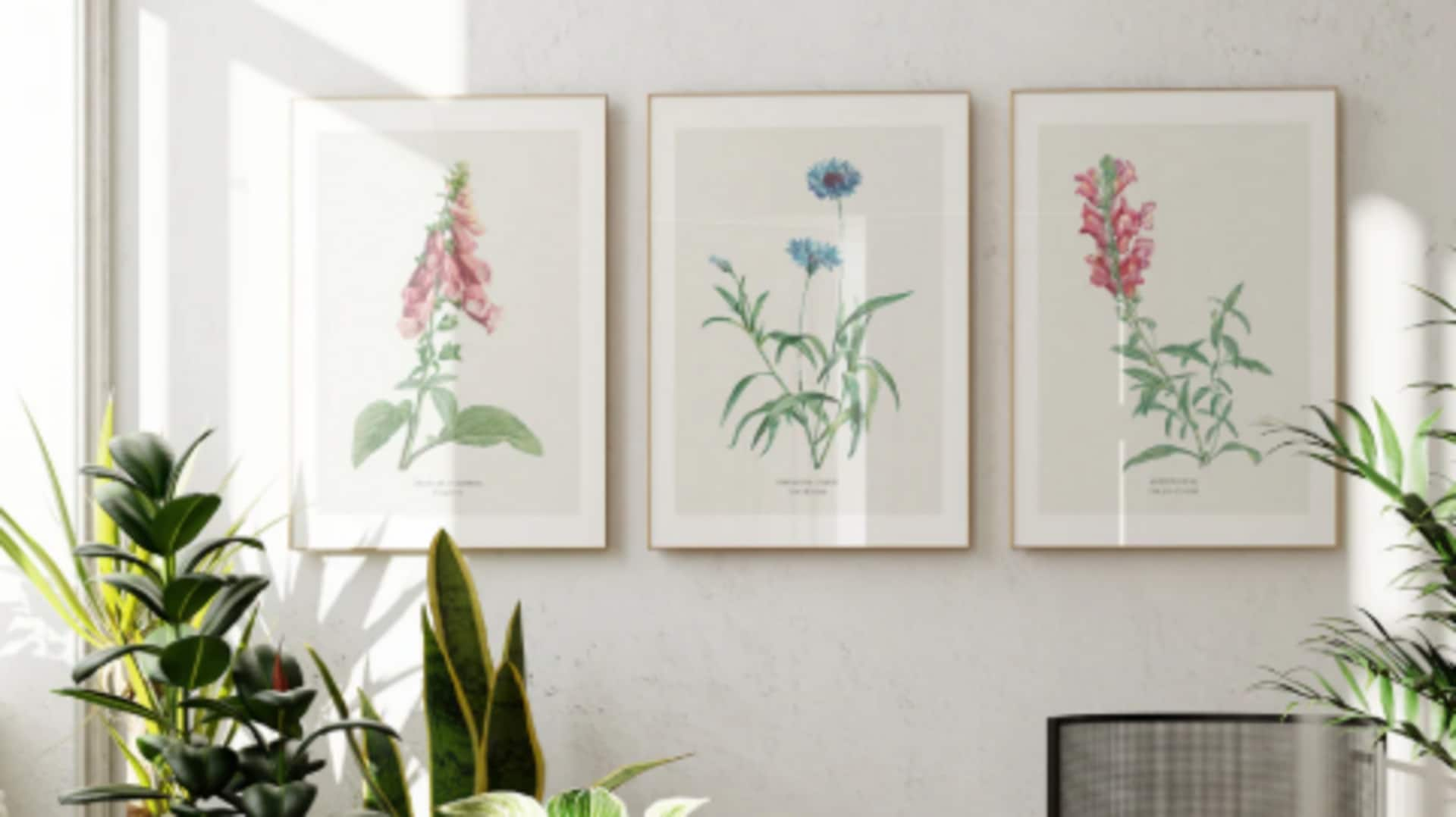
Home decor 101: Try these vintage botanical prints
What's the story
Vintage botanical prints are loved since ages for their evergreen charm and for adding a dash of nature into our homes. They are an absolute decor staple, often featuring intricate illustrations of plants/flowers. From classic to contemporary, their versatility makes them fit in everywhere. With the rising interest in sustainable/nature-inspired decor, vintage botanical prints continue to fascinate homeowners and designers.
Historical insight
The history behind botanical prints
Botanical prints date back to the Renaissance period when they existed for scientific documentation. Artists painstakingly illustrated plants for the sake of studying them, resulting in exquisite artworks that are still awe-inspiring. During the Victorian era, these prints became a rage as decorative pieces at home. The story behind their existence gives the prints more weight than just being decorative items.
Modern integration
Incorporating prints into modern decor
Integrating vintage botanical prints into modern decor can be as easy as pairing them with minimalist furniture or using them as focal points on accent walls. They suit living rooms, bedrooms, and even kitchens. By choosing frames that match your existing decor style—be it rustic wood or sleek metal—you can seamlessly blend these classic pieces into the modern spaces.
Selection tips
Choosing the right print for your space
When choosing botanical prints for your home, keep color scheme, size, and theme in mind. Choose colors that go along with your palette or go for neutral shades for flexibility. The size of the print should match with wall space; larger pieces make a bold statement while smaller ones add a subtle charm. You can also choose themes like tropical plants or local flora.
Maintenance advice
Caring for your botanical prints
Proper care is key to maintaining the beauty of vintage botanical prints. Keep them away from direct sunlight to prevent fading and use UV-protective glass if possible. Dust frames regularly with a soft cloth and avoid using harsh chemicals on glass surfaces. In case you see any signs of wear or damage over time, consult a professional conservator to ensure longevity without compromising quality.